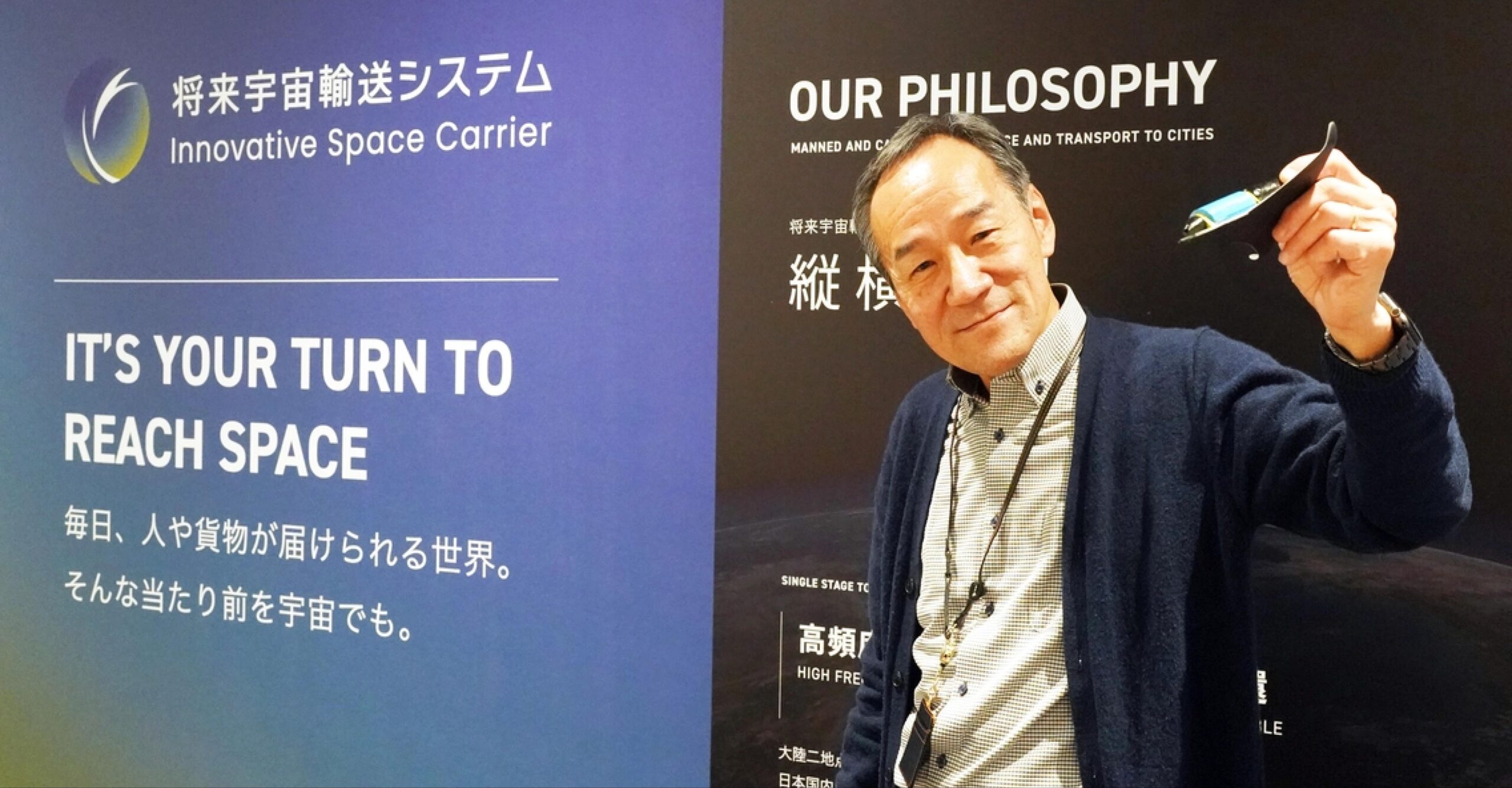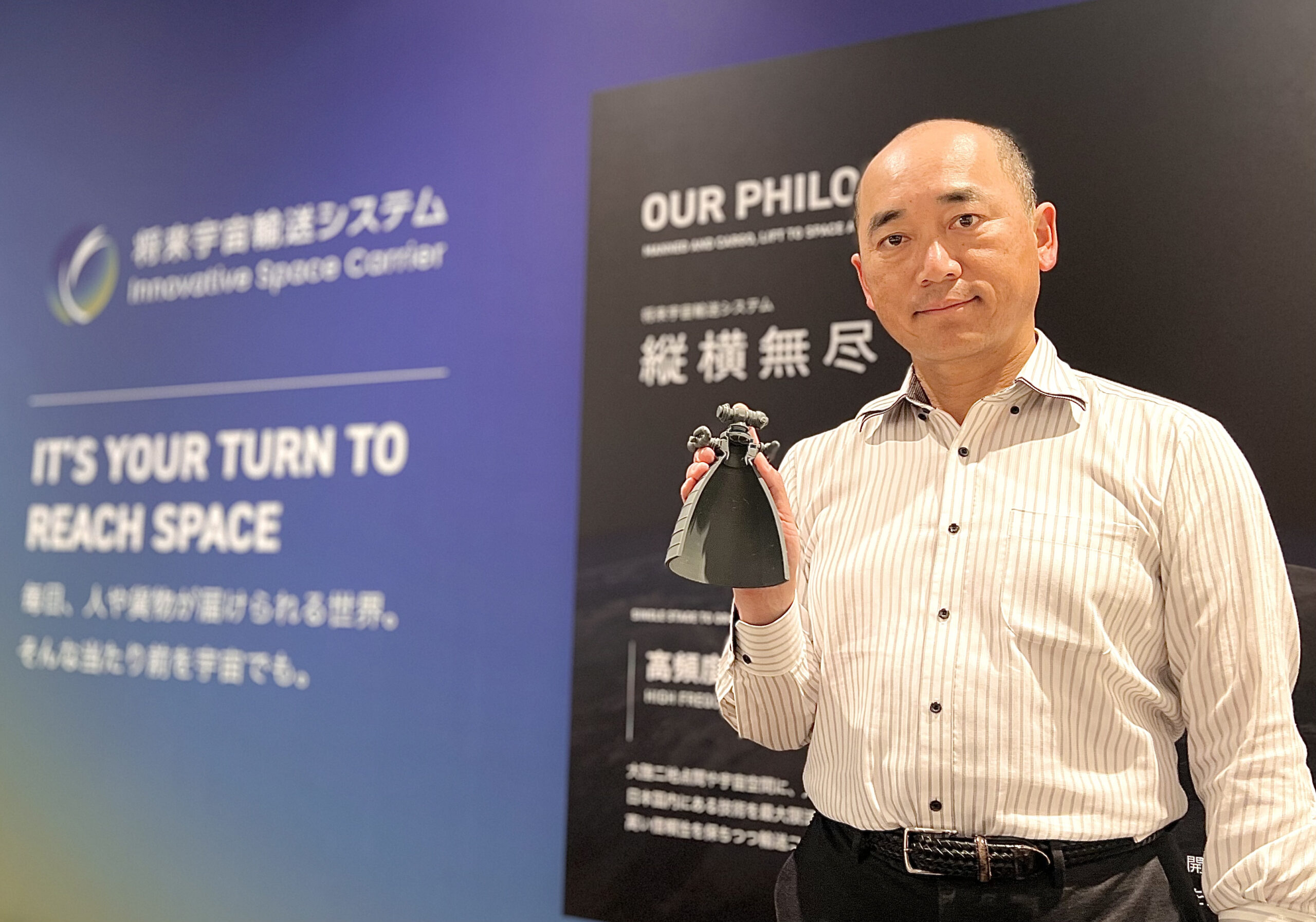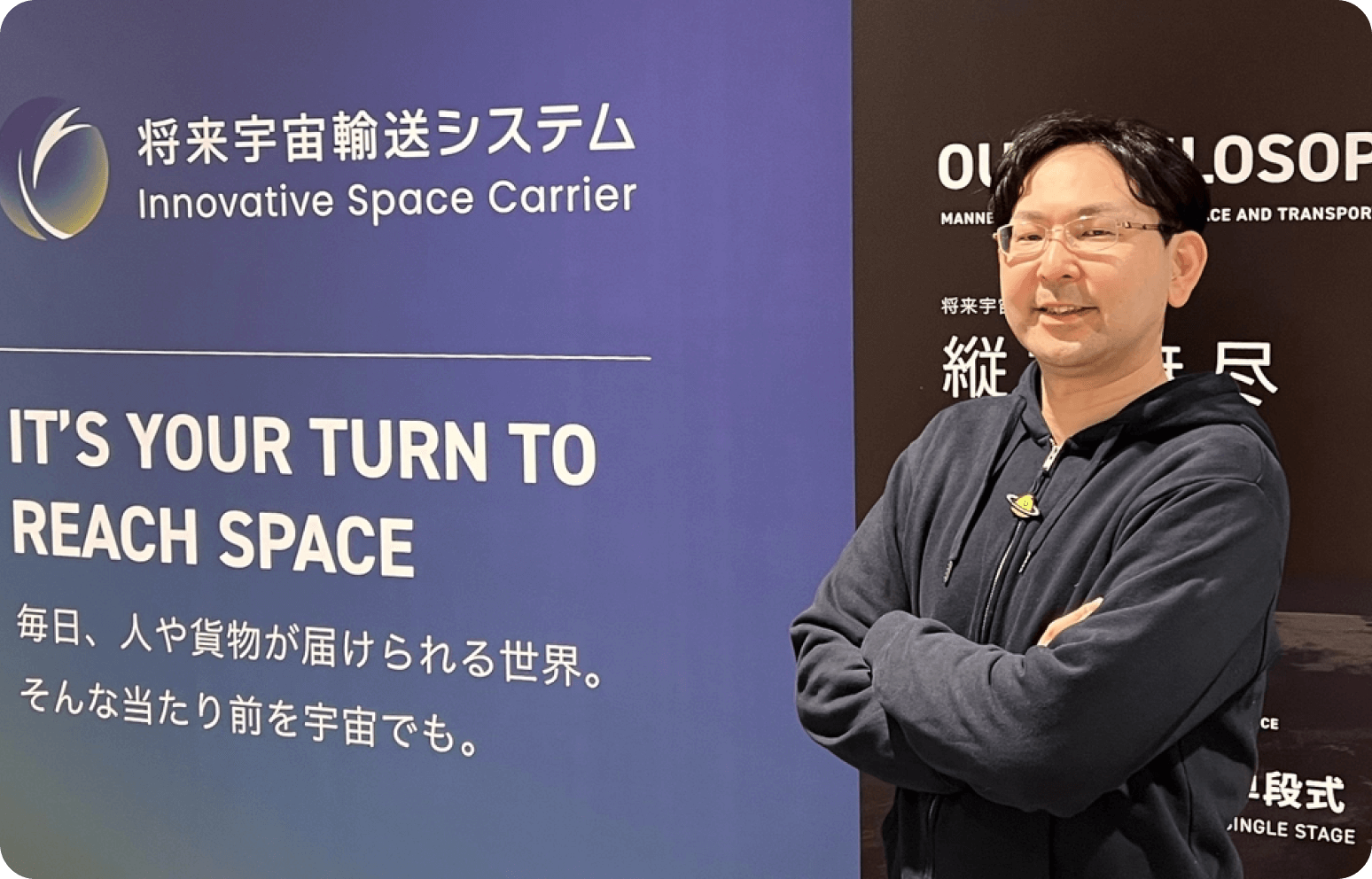1. A career that started with setbacks and failures

- First, please tell us about your experience and career to date.
Although I am currently on the front lines of development as an engineer, more than half of my career has been spent primarily in management positions.
I joined Nissan in 1981 and began my career when I was assigned to the Aerospace Division.
At the time, Halley's Comet was approaching Earth, and I was assigned to the section developing the M-3SII rocket to realize the ISAS mission of "close observation of Halley's Comet, " but I was not in charge of the M-3SII rocket. I was assigned to design and develop the outfitting of a small observation rocket of about 300 mm in diameter, not the M-3SII rocket.
While the development of the M-3SII rocket was exciting for the entire section, I was able to gain valuable experience in an environment where we "had to do everything by ourselves," including orbit analysis, combustion analysis, structural analysis, and cost management of a weather observation rocket in a small team of two or three people.
However, the launch of their rocket ended in failure. We were aiming for a maximum altitude of 40 km, but the rocket flew only 20 km.
Looking back on those days, I was proceeding with development under the direction of my seniors and was not able to act spontaneously. I think this failure could have been prevented if I had carefully and independently tackled each task, such as evaluating air resistance. This experience taught me a lesson: "If you have even the slightest concern, don't leave it to others, but check it yourself.
Later, I was in charge of developing test rockets for NASDA (National Space Development Agency of Japan, now JAXA). This was the development of a test rocket called the TR-I rocket, which was used to confirm the separation function of the auxiliary rocket to be mounted on the H-II rocket, which was under development at the time.
This project was also behind the scenes, so to speak. The project was quietly developed behind the scenes of the flowery H-II rocket.
- First, please tell us about your experience and career to date.

As chief engineer, I was in charge of the design and development of the J-I rocket, a three-stage solid rocket. The mission of the first rocket was to launch a Japanese version of the Space Shuttle into the hypersonic region, and it was successfully launched in 1996. However, the high cost of production became a bottleneck, and production ended with only the first model.
The development of the GX rocket, an improved version of the J-I rocket, followed, a project in which IHI and Nissan teamed up to create a joint venture between the aerospace divisions of the two companies called IHI Aerospace, which also partnered with Lockheed Martin of the United States. Just as development was about to get underway, the project had to be halted due to the "project screening" process.
As project manager, I saw through to completion the development of the product, named the LE8 engine, which was still under development. The blue flame was beautiful.
As a side note, in recent years, many countries have been developing LNG/methane-fueled rocket engines. I sometimes feel a little disappointed that Japan would have been at the top of the world if more effort had been put into development back then.
2. Leaving space for a management-centered career
After the aforementioned project, he experienced a project bundling position in the Corporate Planning Department, and for a while he was mainly in charge of development projects that were not related to space.
First, I was in charge of project management of equipment that supplies air to fuel cell vehicles (FCVs) in IHI's division that makes turbochargers for automobiles.
We struggled, but I remember how happy I was when a car with the finished product was exhibited at the Tokyo Motor Show. It was too expensive and too early for mass production, but it was a fresh experience in an area different from space.
Later, at IHI Jet Service, I was responsible for project management of equipment that washes aircraft of the Self-Defense Forces and Japan Coast Guard with water after landing to protect them from salt damage, as well as management of the design department as the head of the design department.
And I will be joining Future Space Transportation Systems in October 2022. After more than 8 years away from the space industry, "I'm back! I was so happy to be back. At the same time, I left the management and administrative duties I had held for so long and began taking on the challenge of being an engineer again.
Returning to the development site, I often feel that "I am an engineer after all," and frankly enjoy my job. Although I have advanced in my career as a manager, I was mainly engaged in management work and stamping my stamp as a responsible person, and I realized that I was a little fed up with watching the development site from afar, although it was of course a valuable experience.
3. Positive gaps felt in startups
- What are your current duties?
We are developing a so-called spaceplane, which is a combination of a rocket and an aircraft.
An airframe consists of various subsystems such as rocket engines, various structural systems, and electrical systems, and I am in charge of bundling all these design results into a single airframe. My role is to oversee the entire development of the airframe.
Having experienced both development and management in the past, I feel that I am able to understand and coordinate the expertise of each. My past setbacks and various experiences outside the public eye have come together and are being used in my current work.
- Are there any gaps you feel between your past and current work?

In a positive sense, we have a lot of freedom. The company I worked for in the past was a so-called "big company," and there were many rules in our business, for example, we could not directly connect to the outside world when handling data on our computers.
In the case of our company, we use cloud services, etc., to manage our operations with an emphasis on efficiency, which is very convenient. I used to be unable to use my iPad for aircraft design, but now I carry it with me at all times.
Another gap, in a sense, is the fact that we are actively adopting new communication and development methods, such as the introduction of chat tools and agile development, mainly by members with IT industry backgrounds, both of which were previously fixed and taken for granted. The speed of change is very fast and exciting.
- What do you find attractive about your company in your work?
I believe there are two major things.
The first is the vitality within the company. Many of our members are in their 40s, and I feel empowered and stimulated when I see them working actively.
I am particularly amazed at the drive of our founding members. They ask for high level and fast sprints that I feel "can't be done" every day.
Also, as I mentioned earlier, the pace of change is very fast. I am often asked to suggest the use of useful IT tools, and although I sometimes feel that my literacy level is low, I feel that I am growing as I absorb more and more every day.
The second is an environment that is an easy fit for people of all skill sets. We believe that among companies in the space industry, it is easier to make use of your previous experience and have a better chance of establishing yourself.
The reason for this is that the scope of business includes not only heavy engineering aircraft development, but also various areas such as transportation services, education, and attractions like airlines, so even if you cannot achieve results in one area, you may be able to work in another area.
Because we are taking on a wide range of challenges as an organization, we believe that you will have the opportunity and the dream to make the most of your strengths.
4. We want our associates to have a spirit of challenge and enjoy the unknown.
- What kind of people do you need to help you develop your business?
We would like to work with someone who is eager to learn expertise, who can set a goal to move forward toward completion of the transporter in a hands-on way, and who can work hard to achieve the goal. The range of skills you can contribute is very broad, and we are looking for a wide variety of experience. For example, we need knowledge of those who can calculate the maneuverability of the aircraft and those who can improve the comfort of the seats.
However, we have not yet been able to develop a clear and detailed strategy and tactics. It is as if we have a rough idea of the mountain we want to climb, but are still searching for the best way to climb it. Therefore, I would be very much encouraged if you could work with us to verbalize what we need as an organization in order to develop a spaceplane.
Having said that, I am particularly looking for "lightweight " knowledge in my technical area. The aircraft we are aiming for must be lightweight. Therefore, if anyone has metal/composite material technology that can make the fuselage and its on-board parts as light as possible, I would like to ask for your help.
- Any last words for our readers!
The time will surely come when aircraft developed by our company will fly in space and anyone will have access to space.
In the past, Antarctica was a place for explorers, and it was considered impossible for the average person to go there. Now, however, it is easy to land from certain islands in the southern hemisphere.
Space, too, may seem impossible now, but surely, like Antarctica, it will become a place where anyone can go if they want to.
However, in order to achieve this, members are required to work tirelessly and continue to take on the challenge of groping in the unknown. I am now 64 years old, but I am not limited by my own knowledge, and I am making every effort I can to achieve my goals, such as challenging myself to obtain a professional engineer's license.
I participated in this interview because I wanted to convey through my challenges that there is an environment where anyone can take on challenges, without putting a lid on one's ability to grow because of one's age.
Even if you do not apply to our company, we would be happy if we could help encourage you to take on challenges, regardless of your age or circumstances.




